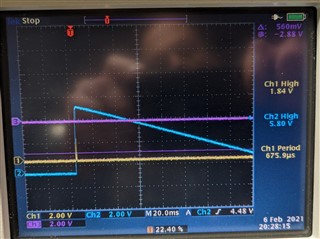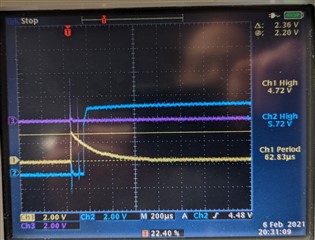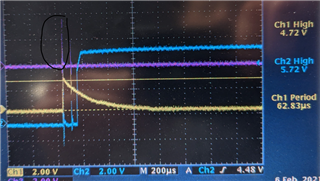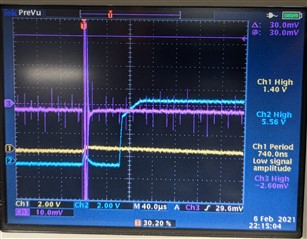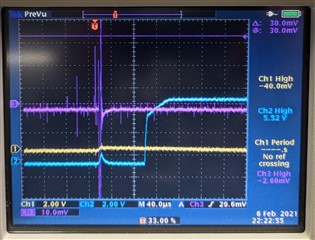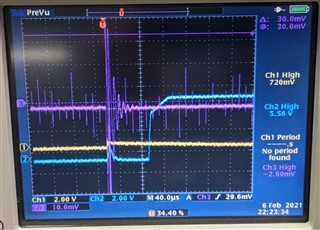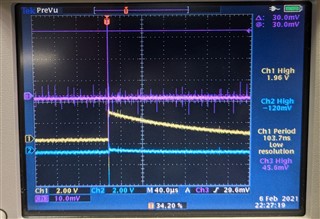Other Parts Discussed in Thread: LM3464A, LM3464
Hello TI support.,
I'm in need of some help. At work I have a LM3464AEVAL board that I will eventually use to drive a string of LEDs and have control of with a PWM signal.
In order to test the eval board out before hooking it up to a expensive prototype LED rail, I'm using a power resistor. My rail voltage is only 27V as that is what the fwd voltage needs to be. The eval board supplys up to 350mA per channel, so I have a 250 ohm resistor in there.
I have my DC supply hooked up to Vin and Pgnd. And the anode of the LED hooked up to Vin and the cathode hooked up to one of LED channels. Finally I have my PWM function generator hooked up to Dm and Pgnd.
I have tried 3.3V PWM and 5V. I also tried a 4ms period which I saw on one of the graphs as well as a much smaller period.
Reading through the LM3464AEVAL and LM3464A datasheets, I can't seem to figure out what I'm missing.
Note: I won't be using this with a AC/DC supply with feedback, so I won't be using the DHC function.
Thanks in advance.





